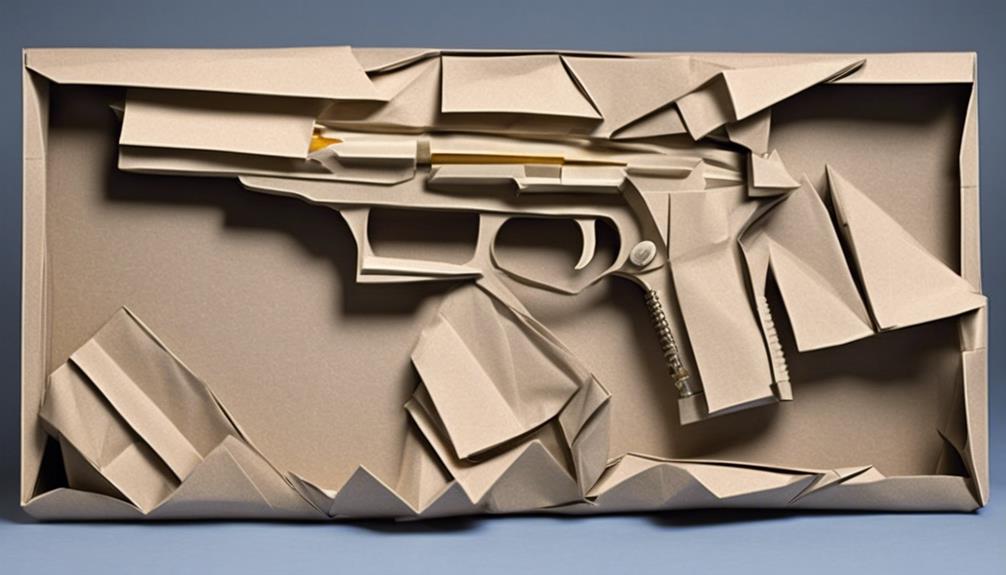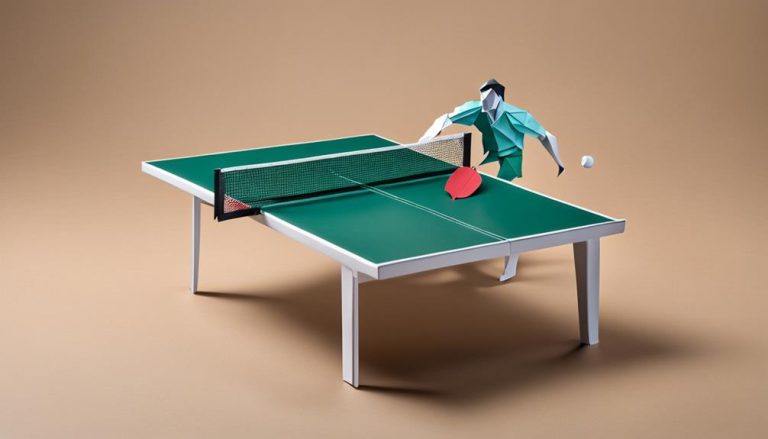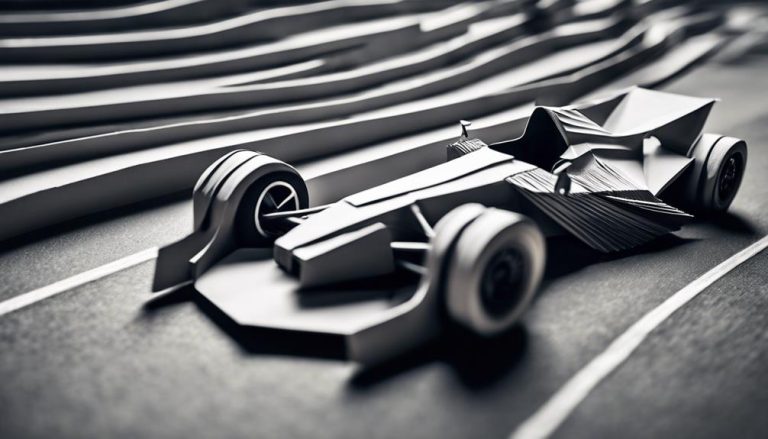General Rules of Shooting Sports
When it comes to navigating the landscape of shooting sports, you must tread carefully, much like a skilled archer drawing back a bowstring with precision and intent. Each movement, each decision holds weight in the realm of firearms. But what if a single misstep could mean more than just missing the mark? Let's unravel the essential guidelines that can make all the difference in your shooting experience.
Safety First

When participating in shooting sports, always prioritize safety above all else. The importance of communication cannot be overstated in ensuring a safe shooting environment. Clear and effective communication between all participants is crucial to avoid accidents and ensure that everyone is on the same page. Before engaging in any shooting activity, take the time to discuss and establish clear signals or commands to use during the session. This will help prevent misunderstandings and potential dangers.
Emergency preparedness is another key aspect of maintaining safety in shooting sports. Being prepared for any unforeseen circumstances can make a significant difference in the outcome of a potentially dangerous situation. Before starting any shooting activity, familiarize yourself with the location of emergency exits, first aid kits, and emergency contact information. It is also essential to have a plan in place in case of emergencies, such as knowing who to contact and how to respond to different scenarios.
Always Wear Ear Protection
To ensure your safety and prevent potential hearing damage, it is crucial to always wear ear protection when participating in shooting sports. Hearing protection is essential because firearms produce high-decibel sounds that can cause permanent hearing loss. Properly fitted ear protection, such as earmuffs or earplugs, can significantly reduce the impact of these loud noises on your ears.
When it comes to ear protection, proper storage and maintenance are key. Store your ear protection in a clean, dry place to prevent any damage that could affect its effectiveness. Regularly check for any signs of wear and tear, and replace them as needed to ensure they continue to provide adequate protection.
Additionally, clear communication with range officers is essential for your safety. If you have any concerns about the noise levels or the effectiveness of your ear protection, do not hesitate to discuss them with the range officers. They are there to help ensure a safe shooting environment for everyone.
Use Eye Protection

When shooting, your eyes are incredibly valuable, so always remember to wear proper eye protection. Different types of eyewear are available, so make sure to choose the one that best suits your needs. Ensure that your eye protection fits well and is well-maintained for optimal safety.
Importance of Eyewear
Wearing proper eyewear is essential for ensuring safety and protection while engaging in shooting sports. When it comes to eye protection, there are key factors to consider:
- Lens Tint: Opt for lenses that reduce glare and enhance visibility in different lighting conditions.
- Fog Resistance: Choose eyewear with anti-fog coatings to maintain clear vision during intense activities.
- Frame Style: Select a frame design that provides a comfortable and secure fit for extended wear.
- Durability: Look for eyewear made from sturdy materials that can withstand impact and protect your eyes effectively.
- Fit: Ensure your eyewear fits properly to prevent any distractions or discomfort while shooting.
Types of Eye Protection
For optimal safety and protection in shooting sports, selecting suitable eye protection is crucial. When choosing eye protection for shooting sports, consider lens options that offer clear vision and impact resistance. Polycarbonate lenses are a popular choice due to their durability and ability to withstand impact. Look for options that provide UV protection to shield your eyes from harmful rays. Additionally, prioritize comfort by selecting lightweight frames that fit securely without causing discomfort. Adjustable nose pads and temple arms can enhance the fit for prolonged wear. By prioritizing clear vision, impact resistance, and comfort in your choice of eye protection, you can ensure your eyes are well-protected during shooting sports.
Proper Fit and Care
To ensure proper fit and care for your eye protection during shooting sports, prioritize selecting eyewear that fits securely and comfortably. When it comes to eye protection for shooting sports, proper fit and maintenance are crucial. Here are some essential tips for taking care of your eye protection:
- Regularly clean your eyewear with a microfiber cloth to remove dirt and debris.
- Inspect your eye protection before each use for any damages or scratches.
- Store your eyewear in a protective case when not in use to prevent damage.
- Adjust the straps or frame to ensure a snug fit that doesn't obstruct your vision.
- Familiarize yourself with proper shooting techniques to minimize the risk of debris impacting your eye protection during target practice.
Keep Firearms Unloaded When Not in Use

Keeping firearms unloaded when not in use is a fundamental safety practice in shooting sports. This practice ensures that accidents are minimized and that everyone in the vicinity remains safe. By keeping firearms unloaded when not actively being used, you significantly reduce the risk of unintentional discharge, which can have severe consequences. One of the benefits of this practice is that it provides a crucial layer of protection, especially in situations where unauthorized individuals might gain access to the firearms. Proper gun storage is essential for maintaining a safe environment and preventing accidents.
Gun safety is paramount in shooting sports, and part of that safety involves always treating a firearm as if it is loaded. By consistently keeping firearms unloaded when not in use, you develop a habit that reinforces this principle. It also helps inculcate a culture of responsibility and awareness among shooters, emphasizing the importance of safe handling practices at all times.
Know Your Target and What's Beyond
When handling firearms in shooting sports, it is crucial to always know your target and what's beyond to ensure the safety of everyone involved. Target identification and backstop awareness are essential aspects of shooting range etiquette and safety precautions. Here are some key points to consider:
- Always positively identify your target: Before firing, make sure you have identified your target correctly. Uncertainty can lead to dangerous situations.
- Be aware of your surroundings: Knowing what is behind your target is as important as knowing the target itself. Bullets can travel far distances and penetrate materials.
- Use proper backstops: When practicing at a shooting range, ensure that you have a suitable backstop to stop bullets. Avoid shooting towards hard surfaces or bodies of water.
- Avoid ricochets: Be cautious of surfaces that can cause bullets to bounce back towards you or others. Ricochets can be unpredictable and hazardous.
- Communicate with others: If you are shooting in a group, communicate effectively about targets and shooting areas to prevent accidents and ensure everyone's safety.
Follow Range Rules and Regulations

Adhere to range rules and regulations for a safe and enjoyable shooting experience. Range etiquette and safety protocols are crucial aspects of shooting sports. By following shooting etiquette and range behavior guidelines, you not only ensure your safety but also contribute to a positive environment for all participants.
Respect for the range rules is fundamental. Always listen carefully to the range officer or instructor, and follow their instructions promptly. Adhering to designated shooting areas and understanding the range layout are essential for maintaining order and preventing accidents. Safety protocols such as wearing ear and eye protection, handling firearms responsibly, and keeping the muzzle pointed in a safe direction should be strictly followed at all times.
Maintaining proper range behavior is not only a matter of personal safety but also a sign of respect for fellow shooters. Be mindful of your actions and how they may impact others around you. Avoid disruptive behavior and always handle firearms with care and caution.
Keep Finger off the Trigger Until Ready to Shoot
When handling a firearm, always remember to keep your finger off the trigger until you are ready to shoot. This simple yet crucial rule ensures trigger discipline, prioritizes safety, and follows the fundamental principle of "ready, aim, fire." By adhering to this guideline, you contribute to a safer and more controlled shooting environment for yourself and those around you.
Trigger Discipline Importance
Keeping your finger off the trigger until you are ready to shoot is a fundamental aspect of trigger discipline in shooting sports. This practice is crucial for ensuring safety and accuracy in handling firearms. To emphasize the importance of trigger discipline, consider the following:
- Prevent Accidental Discharge: Keeping your finger off the trigger guard until you have a clear target reduces the risk of unintentional firing.
- Maintain Control: Proper trigger discipline helps you maintain control over your firearm, especially in high-pressure situations.
- Enhance Accuracy: By only engaging the trigger when you are ready to shoot, you can improve your accuracy and precision.
- Build Discipline: Training yourself to keep your finger off the trigger teaches discipline and reinforces safe handling habits.
- Safety First: Always remember that safety is the top priority in shooting sports; trigger discipline is a key part of safe gun handling practices.
Safety First Priority
Prioritize safety by ensuring your finger remains off the trigger until you are prepared to shoot. Safety precautions are essential in shooting sports to prevent accidents. Keeping your finger off the trigger until you are ready to shoot is a fundamental rule that all shooters must follow. By practicing trigger discipline, you reduce the risk of unintentional firing and ensure that you have full control over when the firearm discharges. Training essentials include instilling the habit of keeping your finger indexed along the frame or slide of the gun until you have acquired your target and are ready to fire. Remember, safety should always come first in shooting sports, and keeping your finger off the trigger until you are prepared to shoot is a crucial aspect of maintaining a safe shooting environment.
Ready, Aim, Fire
To maintain safety in shooting sports, always ensure your finger remains off the trigger until you are fully prepared to shoot. When it comes to shooting techniques and achieving precision accuracy, keeping your finger off the trigger is crucial. Here are some key points to remember:
- Maintain Mental Focus: Concentrate on your target and stay present in the moment.
- Control Your Breathing: Practice steady breathing to enhance your stability and focus.
- Check Your Alignment: Ensure your body, sights, and target are properly aligned before considering shooting.
- Be Mindful of Your Surroundings: Always be aware of your shooting environment and potential hazards.
- Practice Patience: Wait for the right moment to shoot, rushing can lead to errors in judgment.
Properly Store Firearms and Ammunition
When storing firearms and ammunition, it is essential to ensure they are kept in secure and designated locations to prevent unauthorized access. Proper storage of firearms and ammunition is crucial for maintaining safety and preventing accidents. Here are some key points to consider when storing your firearms and ammunition:
Tips for Properly Storing Firearms and Ammunition
| Ammunition Storage | Gun Maintenance | Firearm Security |
|---|---|---|
| – Store ammunition in a cool, dry place away from heat sources. | – Regularly clean your firearms to prevent malfunctions. | – Invest in a gun safe or lock to prevent unauthorized use. |
| – Keep ammunition in its original packaging to prevent confusion. | – Check for rust and wear on your guns regularly. | – Store firearms unloaded and with a trigger lock engaged. |
| – Ensure ammunition is stored out of reach of children or unauthorized individuals. | – Lubricate moving parts to maintain functionality. | – Store ammunition separately from firearms. |
| – Label your ammunition storage containers clearly. | – Follow manufacturer guidelines for maintenance. | – Consider a security system for added protection. |
| – Dispose of old or damaged ammunition properly. | – Store firearms in a location with controlled humidity levels. | – Keep the keys or access codes to your gun safe secure. |
Avoid Alcohol or Drugs Before Shooting

After ensuring your firearms and ammunition are securely stored, it is imperative to avoid consuming alcohol or drugs before shooting to maintain safety and prevent accidents. Shooting sports require a clear and focused mind to handle firearms responsibly. Here are some key points to consider:
- Avoid Distractions: Consuming alcohol or drugs can impair your judgement and coordination, leading to distractions that could result in dangerous situations while handling firearms.
- Maintain Focus on Technique: Shooting requires precision and control. Alcohol or drugs can hinder your ability to focus on the correct techniques, increasing the risk of accidents.
- Stay Alert: Being under the influence of alcohol or drugs can slow down your reaction times, affecting your ability to respond quickly to unexpected situations on the shooting range.
- Promote Safety: By abstaining from alcohol or drugs before shooting, you contribute to creating a safer environment for yourself and those around you.
- Respect the Sport: Shooting sports demand respect for the equipment and the rules. Avoiding substances that impair your judgement shows respect for the sport and its participants.
Seek Proper Training and Guidance
Seeking proper training and guidance is essential for mastering shooting sports and ensuring safety on the range. When delving into the world of shooting sports, understanding training techniques and safety protocols is crucial. Proper instruction can not only enhance your shooting skills but also instill a deep respect for the sport and its rules.
Instructor guidance plays a pivotal role in honing your abilities. A knowledgeable instructor can teach you the correct stance, grip, and aiming techniques. They can also help you understand the importance of following safety protocols such as always keeping the gun pointed in a safe direction and keeping your finger off the trigger until you are ready to shoot. These fundamental lessons are the building blocks for becoming a skilled and responsible shooter.
Moreover, seeking out training from experienced professionals can help you develop advanced shooting skills. Learning how to control your breathing, improve your accuracy, and handle different types of firearms can take your abilities to the next level. With the right guidance, you can progress from a novice shooter to a proficient marksman, all while prioritizing safety and respect for the sport.
Frequently Asked Questions
Can I Use Any Type of Gun for Shooting Sports, or Are There Specific Types That Are Recommended?
You should consider the type of gun you use for shooting sports. While you can use various guns, certain types are recommended for specific disciplines. It's essential to follow best practices, prioritize safety measures, and maintain your equipment.
Are There Any Age Restrictions for Participating in Shooting Sports?
You can join shooting sports as a junior shooter, but age restrictions vary. Parental consent is usually required for minors. Check with specific organizations for guidelines. Embrace the challenge and joy of this sport!
How Often Should I Clean and Maintain My Firearms for Optimal Performance?
To ensure optimal performance, clean your firearms regularly. A clean gun improves accuracy and prevents malfunctions. Maintenance tips include using proper cleaning tools, lubricating moving parts, and storing firearms in a dry place.
What Are Some Common Etiquette Guidelines to Follow While at a Shooting Range?
When at a shooting range, always wear proper attire and prioritize range safety. Respect others by following range rules, listening to range officers, and maintaining a safe environment. These etiquette guidelines contribute to a positive shooting experience.
Are There Any Specific Physical Fitness Requirements for Participating in Shooting Sports?
To excel in shooting sports, physical conditioning plays a crucial role. Strength, balance, and endurance impact your shooting techniques. Regular exercise, focusing on core stability and arm strength, can enhance your performance in various shooting disciplines.






